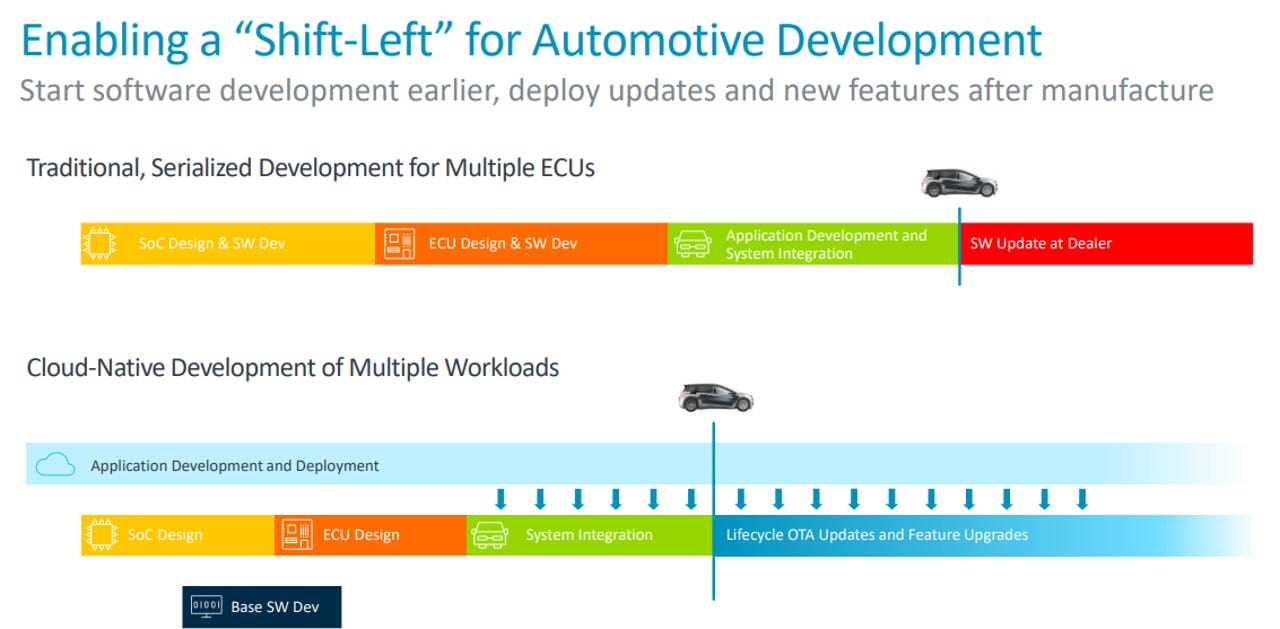Arm lays the groundwork for the software-defined vehicle


Cars are increasingly driven by code, from Advanced Driver Assistance Systems (ADAS) to infotainment systems. Yet as these features and capabilities evolve, the software that needs to be developed, managed, deployed and updated becomes increasingly complex.
Arm is leading a collaborative effort to build a common development framework for the software-defined car to solve this problem. It's working with major technology and automotive partners to develop standards, software, developer resources, and specialized processing platforms designed for automotive applications' safety and real-time needs.
"We strongly believe a software-defined approach can help to address this growing software complexity," Chet Babla, Arm's VP of automotive, told reporters. "But without a common development framework, the industry can't maximize supply chain efficiencies or accelerate innovation."
There are three key elements to Arm's approach, starting with new software architecture and open-source reference implementation. Next, it includes new reference hardware platforms. The last element is close collaboration with partners including AWS, Continental, CARIAD and more.
The new software architecture and the reference implementation is called SOAFEE (Scalable Open Architecture for Embedded Edge). The software architecture combines the real-time and safety needs of automotive with the advantages of a cloud-native approach, allowing for the use of cloud-native concepts such as containers and orchestration. Meanwhile, there will be an open source reference software stack that's going to provide a baseline for Arm partners, helping them in early workflow development and prototyping. All of this is built on top of Project Cassini and SystemReady, which were introduced to solve the cloud-to-edge software and security challenges in the infrastructure segment. SOAFEE extends these concepts to automotive.
An initial release of the SOAFEE collateral and the reference implementation is available to download now. Its immediate availability, Arm says, will empower cloud-based developers to apply their expertise to the future of mobility.
Meanwhile, two new reference hardware platforms will enable automotive workload exploration and testing on high performance, Arm-based silicon. Arm has partnered with Ampere and ADLink to make a reference hardware platform based on available products. One version of the platform, the AVA Developer Platform, is a high-performance, 32-core scalable compute system built for lab-based development. It's capable of running autonomous workloads and allows developers to use accelerator hardware to complement their CPUs.
The second version, the high-performance AVA-AP1 platform, is for in-vehicle prototyping and testing. It has 80 cores for increased CPU performance, extra input/output (IO) capabilities and includes a safety processor.
The platforms are SystemReady-compliant. The combination of the SOAFEE standards framework with the reference hardware platforms should enable significant acceleration in automotive software and system development, Arm says. Both hardware platforms are available for preorder, with general availability expected in Q4 2021.
The Arm-led initiatives have broad support from companies across the automotive supply chain. In addition to the aforementioned companies, they're backed by Apex.AI, Green Hills Software, Linaro, Marvell, MIH Consortium, Red Hat, SUSE, Woven Planet, Zing Robotics and others.